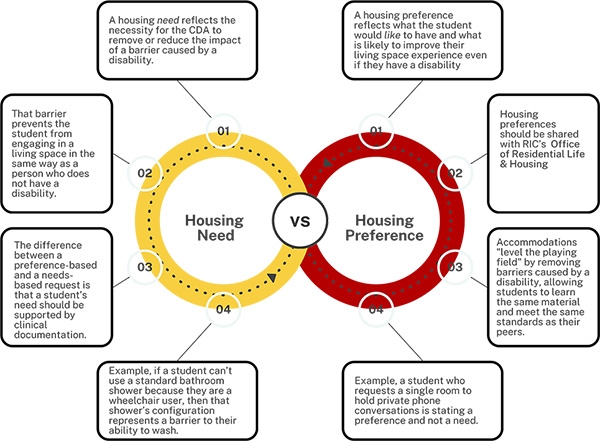Frequently Asked Questions
A single room is a disability accommodation only when clinical history and professional documentation clearly demonstrates a history of substantial limitations and provides a rationale that supports the student's need for a separate living/sleeping space to be able to access and utilize housing. Please be advised that requests for
particular housing assignments based on a student’s preference, rather than need, for that type of living environment or location will not be honored.
ADD/ADHD, Generalized Anxiety, and Depression are diagnoses commonly presented as reasons a student believes they need a single room. However, these diagnoses rarely present as true barriers to access. Below is some of the reasoning for when a single room may not be determined to be a necessary and reasonable accessibility accommodation required for access.
Student housing is designed as living spaces; they do not fall into the category of needing to be quiet study spaces for disabilities that affect focus, concentration, or distractibility. Due to the number of people who live in close proximity, you cannot assume that having a private room would provide a quiet, distraction-free space to any appreciable degree beyond living in a standard double room. The residential experience extends beyond the sleeping space so there are multiple settings on campus (commuter lounges, private Adams Library study rooms spots in various campus buildings, etc.) that provide quiet and private places where students can study, relax, or be alone. Tools like noise-canceling headphones, white noise devices, or phone apps also can help block distracting sounds. Please connect with the CDA for specific recommendations.
Although many lifelong friendships are developed with former roommates, most who have attended college can recall a less-than-perfect roommate situation. Rooms are assigned based on the criteria received through the survey students fill out over the summer in MyRIC, prior to their first semester on-campus. Your RA and Office of Residential Life & Housing have tools and procedures for dealing with roommate concerns.

